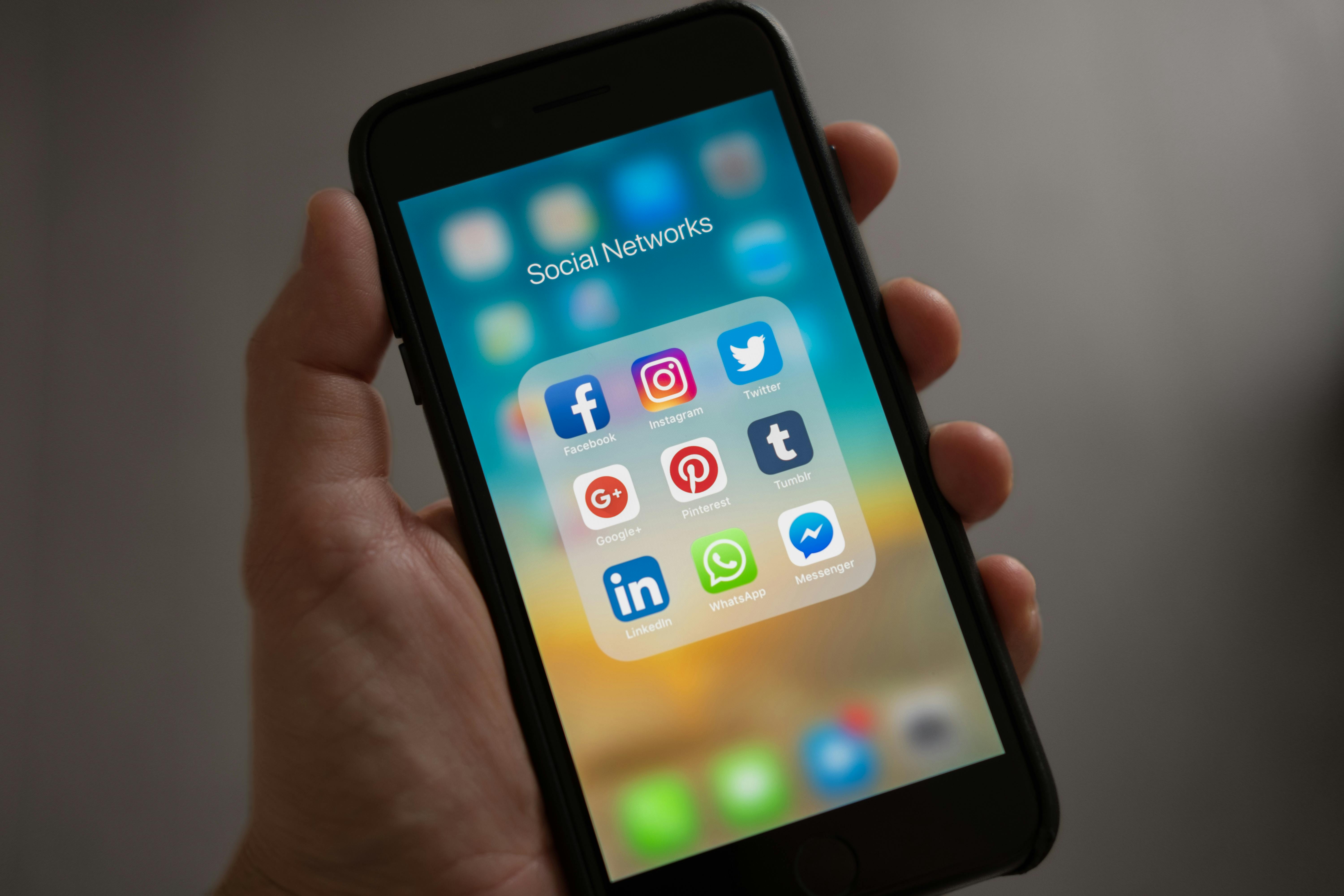Texting and calling have become integral parts of modern dating, shaping the way we communicate and connect with potential partners. In recent years, expectations around these forms of communication have undergone significant changes, driven by advancements in technology and shifts in societal norms. Gone are the days of waiting by the landline for a phone call or painstakingly drafting a letter; instead, instant messaging and quick phone calls now dominate the dating landscape. This article explores the evolution of expectations surrounding texting and calling in dating, highlighting the impact these changes have had on relationships and communication dynamics.
Shift from Calling to Texting
Decline in phone calls
In today’s digital age, there has been a noticeable decline in the use of phone calls as a primary mode of communication, especially in the context of dating. Gone are the days when people eagerly awaited phone calls from their loved ones. With the rise of messaging apps and the convenience of texting, calling has taken a backseat. The once-frequented phone call has now become a rarity, as people prefer the speed and ease of texting.
Preference for texting
Texting has become the preferred mode of communication for many individuals, particularly in the dating realm. There are several reasons for this shift in preference. Firstly, texting allows for convenient communication at any time and place. It provides the flexibility of responding at your own pace, eliminating the pressure that comes with phone calls. Additionally, texting offers a written record of the conversation, enabling individuals to revisit previous messages for reference.
Impact of technology on communication preferences
The advancement of technology has undoubtedly played a significant role in shaping communication preferences. The accessibility of smartphones and the proliferation of messaging apps have made texting a ubiquitous presence in our lives. It has become second nature to communicate through text messages, shaping our expectations and altering the dynamics of dating. However, it is worth exploring the consequences of this shift and understanding the broader implications it presents.
Instant Communication
Expectation of quick replies
One of the key differences between calling and texting is the expectation of prompt replies in the latter. In today’s fast-paced society, there is an unwritten rule that timely responses are necessary in order to maintain a connection. People have grown accustomed to receiving immediate replies, and delays in response can often be seen as disinterest or lack of engagement. This expectation of quick communication can lead to increased stress and anxiety, as individuals feel pressured to constantly be available and responsive.
Rise of online dating apps
The rise of online dating apps has also contributed to the shift towards instant communication. In the digital dating landscape, where potential matches are just a swipe away, quick exchanges via text have become the norm. The convenience and efficiency of messaging enable individuals to connect with multiple people simultaneously, leading to a higher volume of interactions and a greater need for swift replies.
Impatience and anxiety in response times
With the expectation of quick responses and the rise of online dating apps, impatience and anxiety surrounding response times have become prevalent. It is not uncommon for individuals to experience a sense of nervousness while waiting for a reply, constantly checking their phone for any new messages. This heightened state of anticipation can create unnecessary stress and amplify the pressure to reply promptly. As a result, the shift towards instant communication has inadvertently increased anxiety levels in dating scenarios.

Establishing Connection through Texting
Texting as initial communication
Texting has become the go-to method for establishing initial connections in the dating world. It serves as a convenient icebreaker, allowing individuals to express their interest and gauge compatibility without the pressure of a face-to-face encounter. Texting provides a level of comfort and control, giving people the opportunity to carefully craft their messages and present themselves in a favorable light.
Building rapport through written words
Despite the lack of physical presence, texting has the ability to build rapport and establish a connection through written words. Through a series of messages, individuals can engage in meaningful conversations, share personal stories, and delve into common interests. The absence of distractions and the ability to focus solely on written communication can foster a sense of intimacy and allow for the development of emotional connections.
Emoticons and emojis in conveying emotions
In the absence of vocal cues and body language, emoticons and emojis have emerged as valuable tools in conveying emotions through text messages. These visual representations of feelings help to bridge the gap between written words and the subtleties of human expression. From a friendly smiley face to a heartwarming emoji, these visual cues allow individuals to effectively communicate their emotions and add depth to their messages.
Etiquette and Timing
Texting frequency and duration
While texting has become the preferred mode of communication, there remains a question of etiquette regarding frequency and duration. How often is it appropriate to text someone? How long should a text conversation last? These questions can vary depending on the individuals involved and the stage of the relationship. It is essential to strike a balance between maintaining interest and not overwhelming the other person with constant messages.
Defined rules for texting in dating
To navigate the complexities of texting in dating, some individuals adhere to defined rules. These “texting etiquette” guidelines provide a framework for communication, ensuring that both parties are on the same page. Rules such as the “two-day rule” or the “double text rule” aim to establish boundaries and create a sense of structure in the early stages of dating.
Ghosting and its effects
Texting has also brought about a phenomenon known as ghosting, where one party suddenly stops responding or disappears without any explanation. Ghosting can have significant emotional consequences for the person being ghosted, fostering feelings of confusion, rejection, and self-doubt. The impersonal nature of texting makes it easier for individuals to disappear without facing the consequences of their actions, highlighting the need for open and honest communication.

Meaning of Texting
Ambiguity in text messages
One of the challenges of texting is the inherent ambiguity of text messages. Without vocal tone and non-verbal cues, it can be challenging to accurately interpret the intended meaning behind a text. What may have been intended as a lighthearted joke could be interpreted as sarcasm or even rudeness. This ambiguity can lead to misunderstandings and conflicts, highlighting the limitations of text-based communication.
Interpreting tone and intentions
Interpreting the tone and intentions behind text messages requires a certain degree of guesswork. Factors such as the choice of words, punctuation, and even the timing of the message can influence how a text is perceived. While individuals may attempt to project their intended tone through carefully crafted messages, misinterpretations are still inevitable, emphasizing the importance of open communication and clarifications when necessary.
Misunderstandings and conflicts
The lack of context in text messages can give rise to misunderstandings and conflicts. The absence of face-to-face interaction and the inability to clarify intentions in real-time can lead to escalating tensions and strained relationships. It is crucial to approach text-based communication with caution, recognizing its inherent limitations and being mindful of the potential for misunderstandings.
Convenience and Accessibility
Texting as a convenient mode of communication
One of the primary reasons for the preference of texting over phone calls is its convenience. With texting, individuals can engage in conversations regardless of their physical location or commitments. It allows for communication on-the-go, enabling individuals to multitask and respond to messages at their convenience. The ease of texting has made it an integral part of our daily lives, seamlessly integrating into our routines.
Multitasking and non-intrusive nature
Texting allows for multitasking, providing the freedom to engage in other activities while maintaining communication. It allows individuals to juggle various responsibilities without compromising their ability to stay connected. Furthermore, texting is non-intrusive, as it does not demand immediate attention. Unlike phone calls, which require dedicating uninterrupted blocks of time, texting provides the flexibility to respond when it is most convenient.
24/7 access to partners
With the advent of smartphones and the constant accessibility they provide, texting has enabled individuals to stay connected with their partners 24/7. Whether it be a quick check-in, a playful conversation, or a deep emotional exchange, the convenience of texting allows for continuous communication. This constant connection has its benefits, fostering a sense of closeness and reassurance in relationships.

Digital Intimacy and Emotional Connection
Sharing personal thoughts and feelings through texts
Texting has opened up a new avenue for sharing personal thoughts and feelings. The absence of face-to-face contact can sometimes create a sense of safety and anonymity, encouraging individuals to be more open and vulnerable in their messages. Texts provide a space to express emotions, share innermost thoughts, and deepen the level of intimacy in a relationship.
Building emotional bond via messaging
Despite the limitations of text-based communication, it is still possible to build emotional bonds through messaging. Through thoughtful words, genuine interest, and active listening, individuals can foster a sense of connection and understanding. The constant exchange of messages creates a continuous thread of communication that contributes to the development of emotional intimacy.
Emotional disconnection and lack of depth
While texting can facilitate emotional connections, it is important to acknowledge its limitations. The absence of non-verbal cues and the inability to fully convey emotions through text can sometimes result in an emotional disconnect. Texting alone may lack the depth and richness that comes with face-to-face interactions, highlighting the need for a balanced approach that includes a variety of communication methods.
Dangers and Pitfalls
Catfishing and online scams
With the rise of online communication, there is also an increased risk of encountering catfishing and online scams. The impersonal nature of texting makes it easier for individuals to pretend to be someone else, leading to deceptive and fraudulent encounters. It is crucial to exercise caution and practice online safety measures when engaging in text-based communication with unknown individuals.
Reduced face-to-face interactions
The prevalence of texting as a primary mode of communication has contributed to a reduction in face-to-face interactions. While texting offers convenience and ease, it can also lead to a decrease in real-life connections. The lack of physical presence and the absence of non-verbal cues can inhibit social skills and interpersonal development. It is important to strike a balance between digital communication and in-person interactions to maintain healthy relationships.
Disinhibition and lack of accountability
The anonymity and perceived distance provided by texting can sometimes lead to disinhibition and a lack of accountability. Individuals may feel more inclined to express themselves impulsively or engage in behavior they would not normally exhibit in face-to-face interactions. Therefore, it is crucial to be mindful of the impact of text-based communication and to prioritize open and honest dialogue when addressing sensitive topics.
Role of Social Media
Integration of social media into dating communication
Alongside texting, the integration of social media platforms has become a significant aspect of dating communication. Social media profiles allow individuals to showcase their lives, interests, and personalities, providing additional context and opportunities for engagement. The use of direct messaging on social media platforms has also become a popular means of communication between individuals.
Stalking and tracking behaviors
With the accessibility of social media, there is an inevitable rise in stalking and tracking behaviors. Individuals may find themselves tempted to delve into the social media presence of their dating partners, scrutinizing their activities, and mining for information. This behavior can be invasive and may lead to potential trust issues and intrusion into personal boundaries.
Impression management and relationship status
Social media offers individuals the ability to manage their impressions and control the presentation of their relationships. The act of changing relationship statuses, sharing couple photos, and engaging in public displays of affection creates a virtual representation of the relationship. While this can be a positive way to express commitment in a digital age, it is important to recognize that the online portrayal may differ from the true dynamics of the relationship.
Return to Phone Calls
Revival of phone conversations
Despite the dominance of texting, there is a growing recognition of the value of phone calls in fostering genuine connections. Phone conversations offer a level of intimacy and depth that cannot be replicated through text. The sound of someone’s voice, the nuances in their tone, and the opportunity for real-time conversation can greatly enhance the quality of communication and the sense of connection.
Seeking genuine connection and voice nuances
In an era of instant messaging and text-based communication, phone calls represent a return to seeking genuine connections and the nuances of the human voice. The ability to have meaningful conversations can help individuals forge deeper bonds, express emotions more authentically, and truly connect with their dating partners. The revival of phone calls brings with it a sense of nostalgia and a desire to rediscover the richness that comes with vocal communication.
Balancing texting and calling
While phone calls offer unique benefits, it is essential to strike a balance between texting and calling. Each mode of communication has its strengths and limitations, and finding the right blend will depend on individual preferences, the stage of the relationship, and the specific context. By embracing both text-based communication and phone calls, individuals can fully explore the dimensions of connection and foster meaningful relationships.
In conclusion, the evolution of expectations around texting and calling in dating has been shaped by advancements in technology and the convenience it provides. The shift towards texting as a primary mode of communication has brought about changes in communication preferences, instant gratification expectations, and the way connections are established. While texting offers convenience, it is important to recognize the limitations it poses in terms of emotional depth and nuanced communication. Balancing the convenience of texting with the depth of phone calls and face-to-face interactions is crucial in establishing and maintaining healthy and fulfilling relationships in the digital age.
Christopher Conway, the innovative mind behind “Love Blueprints,” is a seasoned relationship expert and author. His insightful guidance, drawn from years of experience and study, offers transformative strategies for modern love and dating. Christopher’s commitment to enhancing romantic connections has made “Love Blueprints” a go-to resource for those navigating the complexities of relationships.




